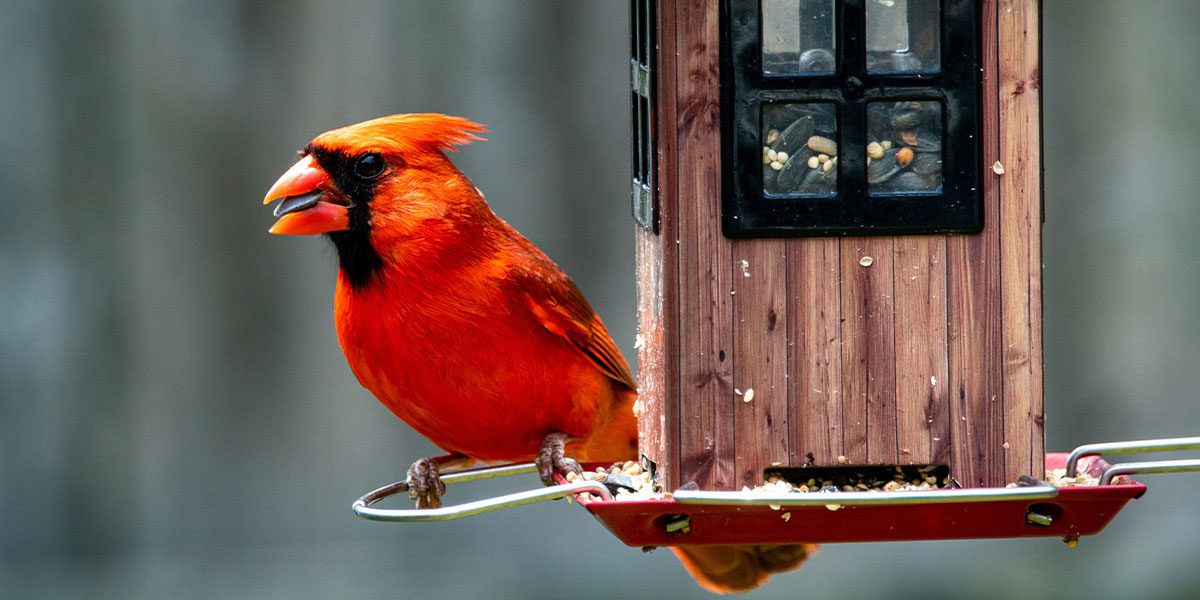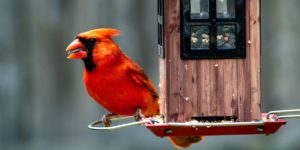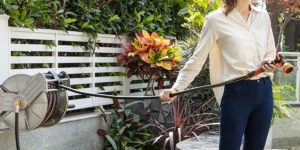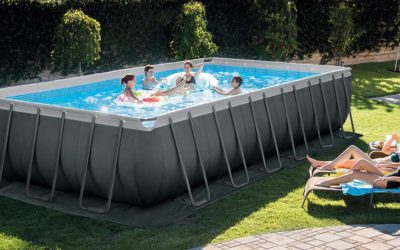Feed Squirrels, Rabbits, Chipmunks, & Wild Birds Natural Diet Items
Feeding backyard wildlife can be an enjoyable and rewarding experience, allowing individuals to connect with nature and learn about the habits and behaviors of various backyard visitors. Backyard wildlife food mixes offer a fantastic way to support and attract various native species to your outdoor space. These specially formulated mixes are designed to cater to the natural dietary needs of squirrels, rabbits, chipmunks, and various birds, helping them maintain optimum health and promoting species diversity.
By providing a reliable source of essential nutrients, you can transform your backyard into a haven for these fascinating creatures, creating an inviting space for wildlife observation and learning opportunities for the whole family. These mixes are carefully crafted using a mixture of seeds, nuts, fruits, and grains that mimic the foraging habits of these animals, ensuring they get the right balance of vitamins and minerals necessary for their survival.
Moreover, these wildlife food mixes could play an important role in sustaining the populations of these friendly visitors, whose habitats and food sources are often endangered by urbanization and human interference. In return, these creatures can significantly benefit your garden’s ecosystem, from natural pest control to pollination. A simple way to give back to nature, wildlife food mixes allow you to create a thriving ecosystem, fostering a harmonious coexistence of different species while enabling you to enjoy the magic of nature right in the comfort of your home.
What items should be included in backyard wildlife food?
A well-planned food selection not only brings various species of birds, insects, and small animals to your backyard but also fosters a healthy and thriving ecosystem in your outdoor space. When creating your menu of backyard edibles for feeding your own backyard wildlife, consider including a variety of food items, such as seeds, nuts, fruits, and insects. Seeds like sunflower, thistle, and millet seeds will attract diverse birds, while nuts such as peanuts and acorns provide sustenance for squirrels and chipmunks. Fresh fruits like berries and apples, as well as kitchen scraps like melon rinds and banana peels, are beloved by butterflies and even some mammals. Finally, don’t forget the carnivorous creatures like backyard reptiles and amphibians, who will appreciate live or dried insects like mealworms, earthworms, and crickets.
Backyard Sanctuary For Small Wildlife
Creating your own little wildlife sanctuary in your backyard requires careful planning and consideration. One should start by identifying the types of wildlife local to the region and researching their habitat requirements. Planting native vegetation will help to bring in and support a diverse range of species. Providing shelter, such as birdhouses and brush piles, can also be beneficial. Water sources, such as birdbaths or small ponds, will bring those that require a habitat with a nearby water source. Additionally, it’s important to limit the use of pesticides and other harmful chemicals that can hurt wildlife. With proper planning and care, a backyard sanctuary can provide a safe and healthy habitat for many wild characters who will visit often.
The Ingredient Mixture For Your Wildlife Foods
The key to drawing a diverse range of wildlife to your backyard is to provide a variety of foods that suit the different visitors. A good mix of seeds, nuts, and fruits can bring birds, squirrels, and other small mammals, while adding insects such as mealworms can bring in a wider range of wildlife, such as reptiles and amphibians. Additionally, adding plants that produce nectar can help get the attention of pollinators such as bees and butterflies. It’s important to note that different wildlife will have different preferences and dietary requirements, so it’s important to research the specific needs of the wildlife visitors you want to invite and tailor your food mix accordingly. Providing fresh water is also crucial, as many of your small friends will rely on it for drinking and bathing.
Supplemental Ingredients For Your Wildlife Food
If you want to invite a wide variety of wildlife to your backyard, consider adding supplemental items to your existing food mixture. One option is to add fruits like apples and berries, which are a natural food source for many birds and small mammals. Another option is to add mealworms, which are a favorite of bluebirds and many other species. Peanuts, sunflower seeds, and suet are great additions to any wildlife food mix. When adding supplements, be sure to avoid using anything that is toxic to wildlife or that may draw in unwanted visitors, like raccoons or rodents. With some experimentation and observation, you can create a backyard sanctuary for wildlife that will delight nature lovers of all ages.
Dietary Needs of Your Small Wild Visitors
Understanding the dietary needs of these small friends and critters is important for their health and well-being. Many small mammals, such as hamsters and gerbils, are omnivores and require a balanced diet of both plant and animal protein. Other small mammals, such as rabbits and guinea pigs, are herbivores and require a diet rich in hay, vegetables, and fruits. It is important to provide the correct types and quantities of food for each animal, as overfeeding or underfeeding can lead to health problems. It is also important to provide fresh water and avoid human foods that could be harmful to them, such as chocolate and caffeine.
Black Oil Sunflower Seeds & Corn
Black oil sunflower seeds and corn are included in many birdseed mixes. The sunflower seeds are high in fat and protein, providing birds with the necessary energy and nutrients to thrive. They also have a high oil content, which helps keep feathers healthy and shiny. Corn, on the other hand, is a great source of carbohydrates and offers a substantial source of energy. Incorporating these sunflower seeds and corn into birdseed mixes ensures a balanced and nutritious diet, helping your visitors stay healthy and active. Additionally, these two are loved by many species of our flying friends, making them an important addition to any backyard feeder.
Ingredient Quality & Formulation For Optimal Food Mixes
When creating optimal backyard wildlife food, the quality and formulation of ingredients are crucial. Opt for products that include high-quality, natural ingredients such as seeds, nuts, and dried fruits that offer a variety of nutrients for different species. Avoid fillers and processed foods that lack nutritional value and could harm wildlife. Balancing the mix according to species’ preferences will encourage a diverse wildlife community in the backyard. Additionally, adapting the formulation during seasonal changes will ensure their needs are met year-round. By prioritizing quality and thoughtful formulation, the visiting wildlife will thrive and continue to visit your yard for nourishment.
Some Items The Local Wildlife May Like:
Here is a completely non-exhaustive list of some items to consider in your tasty mix for a wide variety of small animals. Canadian field peas, sun-cured alfalfa meal, dehulled soybean meal, dried cane molasses, ground oats, ground corn, ground wheat, striped sunflower, milo, and cracked corn.
Attract squirrels, rabbits, chipmunks, and others to your yard
Tips for effectively using feeders and blended food for small wildlife
Using feeders and food mixtures is a great way to bring in small wildlife, but there are some tips to keep in mind to make it more effective. First, choose the right wildlife feeder for the species you want to invite to the party. For example, hummingbirds need nectar feeders, while finches prefer tube feeders. Next, keep them clean to prevent the spread of disease. A mixed food with nuts, fruits, and seeds can be formulated with ingredients designed to attract a wide variety of birds and squirrels. Additionally, placing them in a safe and visible spot, away from predators, can encourage more wildlife to visit. Refill the food supply regularly and observe from a distance without disturbing them. Proper use of feeders can provide a fascinating and rewarding experience for you and the wildlife you invite.
Designing your backyard landscape to be more appealing to wildlife
Designing your backyard landscape to be more appealing to wildlife is a great idea for both aesthetic and environmental reasons. To invite regular birds, consider planting fruiting plants like elderberry or serviceberry, and provide a water source such as a bird bath. For butterflies, plant nectar-rich flowers like lavender, butterfly bush, or milkweed. You can also create homes for beneficial insects like ladybugs and lacewings by installing insect hotels or leaving areas of your yard for fallen leaves and brush to accumulate. Incorporating a variety of native plants will not only bring local wildlife but also promotes biodiversity and can lower maintenance costs by reducing the need for fertilizers, pesticides, and watering. With a little planning, you can turn your backyard not only into an oasis for yourself but for the wildlife that share this planet with us.
What precautions should you take when feeding wildlife?
Feeding wildlife can be enjoyable for many homeowners. However, it is important to take certain precautions when offering food to these wild visitors, as doing so can have unintended consequences on the local ecosystem and the well-being of the animals. One crucial aspect to consider is monitoring the impacts of these activities on the local ecosystem. Consequences can include overpopulation, imbalance in the food web, and alteration of animal behavior, among others. Therefore, it is crucial to be aware of the potential effects on wildlife and adjust your actions accordingly to minimize harm.
Understanding the risks of overfeeding and potential conflicts between species is another important aspect of feeding wildlife responsibly. Overfeeding can lead to dependence on human-provided food, which can affect the animals’ natural foraging skills and potentially lead to conflicts between species as they compete for resources. Striking a balance between providing food and encouraging self-sufficiency is essential. This can be achieved by offering appropriate food types, such as native plants, and avoiding overdoing it with an overabundance of supplementary food like birdseed or kitchen scraps.
Preventing the spread of disease in wildlife populations is another important consideration to keep in mind. Proper maintenance and cleanliness of bird feeders, birdbaths, platform feeders, and other feeding stations can help reduce the risk of disease transmission between animals. Additionally, it is wise to avoid feeding wildlife by hand or using dishes that may not be cleaned thoroughly, as this can lead to the spread of pathogens.
Lastly, ensuring the safety of wildlife from potential threats or hazards is imperative. This may include locating bird feeders away from areas where cats or other predators can access them, keeping food options at safe heights off the ground, and avoiding placing feeding stations too close to windows, which can result in bird collisions. By taking these precautions into account, feeding wildlife can remain a delightful and environmentally responsible pastime for a true nature lover.






























